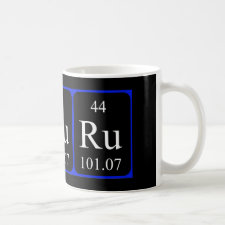
Authors: Zambrzycka E, Godlewska-Zylkiewicz B
Article Title: A new ion imprinted polymer based on Ru(III)-thiobarbituric acid complex for solid phase extraction of ruthenium(III) prior to its determination by ETAAS.
Publication date: 2014
Journal: Microchimica Acta
Volume: 181
Issue: (9-10)
Page numbers: 1019-1027.
DOI: 10.1007/s00604-014-1190-0
Abstract: A new ruthenium ion imprinted polymer was prepared from the Ru(III) 2-thiobarbituric acid complex (the template), methacrylic acid or acrylamide (the functional monomers), and ethylene glycol dimethacrylate (the cross-linking agent) using 2,2'-azobisisobutyronitrile as the radical initiator. The ion imprinted polymer was characterized and used as a selective sorbent for the solid phase extraction of Ru(III) ions. The effects of type of functional monomer, sample volume, solution pH and flow rate on the extraction efficiency were studied in the dynamic mode. Ru(III) ion was quantitatively retained on the sorbents in the pH range from 3.5 to 10, and can be eluted with 4 mol L-1 aqueous ammonia. The affinity of Ru(III) for the ion imprinted polymer based on the acrylamide monomer is weaker than that for the polymer based on the methacrylic acid monomer, which therefore was used in interference studies and in analytical applications. Following extraction of Ru(III) ions with the imprint and their subsequent elution from the polymer with aqueous ammonia, Ru(III) was detected by electrothermal atomic absorption spectrometry with a detection limit of 0.21 ng mL-1. The method was successfully applied to the determination of trace amounts of Ru(III) in water, waste, road dust and platinum ore (CRM SARM 76) with a reproducibility (expressed as RSD) below 6.4 %
Template and target information: ruthenium ion, Ru(III), Ru(III) 2-thiobarbituric acid complex
Author keywords: ruthenium, separation, preconcentration, Ion imprinted polymers, environmental samples, Electrothermal atomic absorption spectrometry



Join the Society for Molecular Imprinting

New items RSS feed
Sign-up for e-mail updates:
Choose between receiving an occasional newsletter or more frequent e-mail alerts.
Click here to go to the sign-up page.
Is your name elemental or peptidic? Enter your name and find out by clicking either of the buttons below!
Other products you may like:
 MIPdatabase
MIPdatabase









